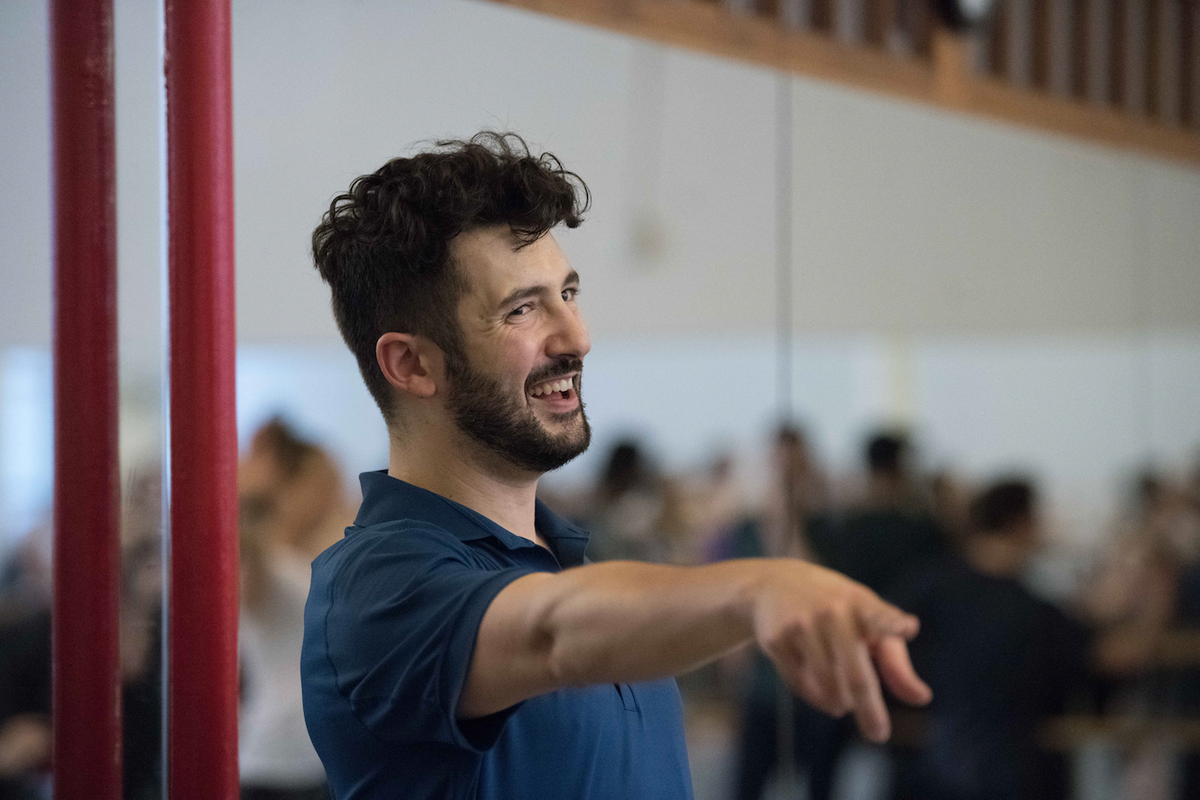
It’s late on a Tuesday afternoon in June, and Al Blackstone‘s theater jazz class at Steps on Broadway is just getting started. The energy in the room is cheery, as sunshine comes through the windows. Blackstone walks around the studio, beaming as he welcomes each student individually. Dancers are gabbing, dressed comfortably in mostly leggings and fitted shirts. Everyone seems relaxed yet eager to learn. There’s the sense this is a class you take when you need to be reminded of how much you love to dance. Everyone is there to have a good time.
Class begins with a long technical warm-up, which includes pliés, tendus, lunges, walking, stretches, abs and more. To transition from warm-up to center, Blackstone gets the dancers pumped with a step touch, chasé and grape-vine groove, with arms rolling, reaching and shaking. By the end of it, everyone is smiling uncontrollably. His center combination, set to Aretha Franklin’s “Respect,” is all jazz lines and big personality—two things Blackstone was born to deliver.
He cracks lighthearted jokes that keep dancers engaged and entertained, at one point even complimenting a student for grasping the pole in the center of the room for support, “Love that you leaned on the pole,” he says, teasing, “Smart choice!”
His class is equal parts challenging and delightful—a true breath of fresh air. Check out these four favorite takeaways!
1. Whether you are the teacher or student, intentionally make class a positive space.
The feeling in the room was so uplifting, and Blackstone says he created that intentionally. “Early on I realized that I wanted my class to be a place where people could really open up,” he says. “It’s geared to professional dancers, whose auditions and rehearsals are intense enough. I wanted to create a class that felt like home, where dancers could improve and be challenged but not stressed out.”
How great is that? In such a high-pressure industry, it’s nice to know that there are teachers out there who want class to be a joyful place. As teachers and performers, we, too, should be committed to adding that kind of energy to every classroom we enter.
2. Be approachable.
As the dancers in the room balanced in sus-sous during warm-up, their faces looked concentrated and serious. When they finally came down to fifth, Blackstone yelled, “Great! Now do it again, but try to look more approachable.” The classroom erupted into laughter, but the sentiment stuck. We should never get so caught up in execution that we forget to include our audience in our performance. We want to them to feel welcome to observe us. We need to be approachable.
3. Find your front.
After the first round of groups, Blackstone paused the music to remind dancers to find their front. “So many dancers look slightly above or below eye level,” he explains. “I’m trying to prepare dancers for performing in theatrical spaces. It’s important that you know how to project your energy, focus and movement to the back of the house. Knowing where your front is means that you know how to do that in the most direct, confident way possible.”
4. Don’t ask for permission to be really good.
Just as class was winding down, Blackstone reminded dancers not to ask for permission to be really good. “I feel like in my class people don’t want to be pushy and stand front and center,” he says. “But it’s important to feel confident and be generous with your talent. Be a positive leader. Every room needs a leader, so step up. If you make a mistake, that’s OK.”



